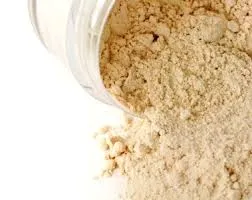Chemical Dosing for Water Treatment Ensuring Safe and Clean Water
Water is a fundamental resource, essential for human life, industry, agriculture, and ecosystem health. However, the availability of safe drinking water is increasingly challenged by pollution, population growth, and climate change. Chemical dosing in water treatment plays a crucial role in ensuring that water meets safety standards and is suitable for various uses. This article delves into the methods and significance of chemical dosing in water treatment and its impact on public health and the environment.
Understanding Chemical Dosing
Chemical dosing involves adding specific chemicals to raw water during treatment processes to achieve desired water quality. These chemicals can perform a variety of functions, including disinfection, coagulation, flocculation, and pH adjustment. The selection of appropriate chemicals and dosing rates depends on various factors, including the source water quality, treatment objectives, and regulatory requirements.
Types of Chemicals Used
1. Coagulants Coagulants, such as aluminum sulfate and ferric chloride, are commonly added to raw water to facilitate the aggregation of suspended particles. The process of coagulation results in the formation of larger particles, known as flocs, which can then be easily removed from the water during sedimentation or filtration processes.
2. Disinfectants Ensuring that water is free from pathogens is critical for public health. Disinfectants, like chlorine, chloramine, and ozone, are employed to eliminate bacteria, viruses, and other harmful microorganisms. Each disinfectant has its advantages and drawbacks, including residual effectiveness and potential formation of by-products, which must be carefully managed.
3. pH Adjusters The pH level of water significantly influences the solubility and availability of various contaminants. Chemicals such as sulfuric acid, sodium hydroxide, and lime are utilized to adjust the pH of water, optimizing conditions for coagulation and disinfection.
chemical dosing for water treatment

4. Fluoridation Agents In some regions, fluoride compounds are added to drinking water to promote dental health. The appropriate dosing is critical to avoid exceeding recommended levels that could lead to dental fluorosis.
5. Nutrient Additives In systems designed for the treatment of wastewater, nutrients such as phosphorus and nitrogen may be introduced to promote the growth of specific bacteria that aid in breaking down organic materials.
Importance of Accurate Dosing
Precision in chemical dosing is essential for effective water treatment. Underdosing may lead to insufficient treatment, resulting in harmful organisms surviving the process or contaminants remaining in the water. Conversely, overdosing can introduce harmful levels of chemicals into the water supply, posing risks to human health and the environment. Advanced dosing systems, often equipped with sensors and automated controls, are employed to ensure that chemical injections are accurate and responsive to real-time water quality changes.
Environmental Considerations
The use of chemicals in water treatment requires careful consideration of environmental impacts. The disposal of chemical by-products, such as sludge from coagulation processes or residual chlorine, must be managed to minimize harm to aquatic ecosystems. Additionally, the balance between effective treatment and environmental stewardship is continuously being evaluated as regulations evolve and public awareness increases.
Conclusion
Chemical dosing is an integral part of modern water treatment processes, ensuring access to safe and clean water. As challenges related to water quality continue to grow, advancements in chemical dosing technologies and methods will be crucial. Ongoing research and development will focus on improving the efficacy, safety, and environmental sustainability of chemical use in water treatment. By prioritizing proper chemical dosing, we can safeguard public health and preserve our vital water resources for future generations.

